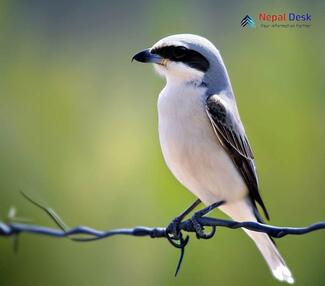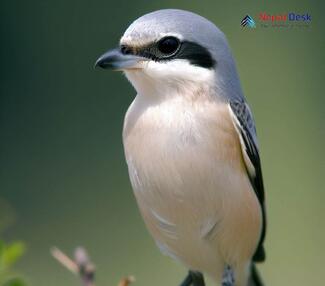The Southern Grey Shrike (Lanius meridionalis) is a fascinating and elusive bird species that has intrigued birdwatchers and nature enthusiasts for years. Its striking appearance, interesting behaviors, and presence in Nepal's diverse ecosystems make it a species worth discovering. In this article, we'll delve into the fascinating world of the Southern Grey Shrike and explore its natural habitat, characteristics, and its role in the ecosystem.
Captivating Characteristics
The Southern Grey Shrike is a medium-sized passerine bird that measures about 25 cm in length. It features a distinctive appearance with a bold combination of colors – its head and back are covered in beautiful grey plumage, while its underparts exhibit striking white feathers.
One of the most iconic features of the Southern Grey Shrike is the black facial mask that extends from its bill to its beady eyes. This unique marking gives it an unmistakable appearance when spotted in the wild. Another notable characteristic is its long tail with black and white feathers, enabling enhanced maneuverability during flight.
Resourceful and Skilled Predators
Southern Grey Shrikes are known for their incredible adaptability as predators. They primarily prey on insects, small mammals, birds, and reptiles. These agile hunters have developed a peculiar method of impaling their prey on sharp objects such as thorns or barbed wire fences in order to store food or attract potential mates.
A Flourishing Presence in Nepal
Nepal offers an ideal habitat for Southern Grey Shrikes due to its rich biodiversity and varied landscapes. The species can be found in open country habitats such as scrublands, grasslands, agricultural fields, and lightly forested areas throughout Nepal.
While rare sightings have been documented in lower elevations like the Terai region, March to May is considered the prime time to spot Southern Grey Shrikes in higher elevations across the country. Altitude ranges between 1,500 and 3,500 meters provide perfect breeding and foraging grounds for these fascinating birds.
Conservation and Importance
Southern Grey Shrikes play a vital role in maintaining a balance within their ecosystems. By preying on insects like locusts and beetles, they help to control pest populations and protect crops from significant damage. Unfortunately, habitat loss, pollution, and climate change have led to declines in Southern Grey Shrike populations.
Conservation initiatives in Nepal focus on preserving their habitat and educating local communities about the importance of this unique species. Through eco-tourism, birdwatching, and sustainable development practices, Nepalese locals are encouraged to participate in efforts to protect the Southern Grey Shrike and ensure its continued presence in Nepal's beautiful landscapes.
In conclusion, the Southern Grey Shrike is a captivating species that personifies the wonder of Nepal's rich biodiversity. Whether you're an avid birdwatcher or simply a nature enthusiast, keeping an eye out for this fascinating bird on your next trip to Nepal will undoubtedly enrich your experience.




